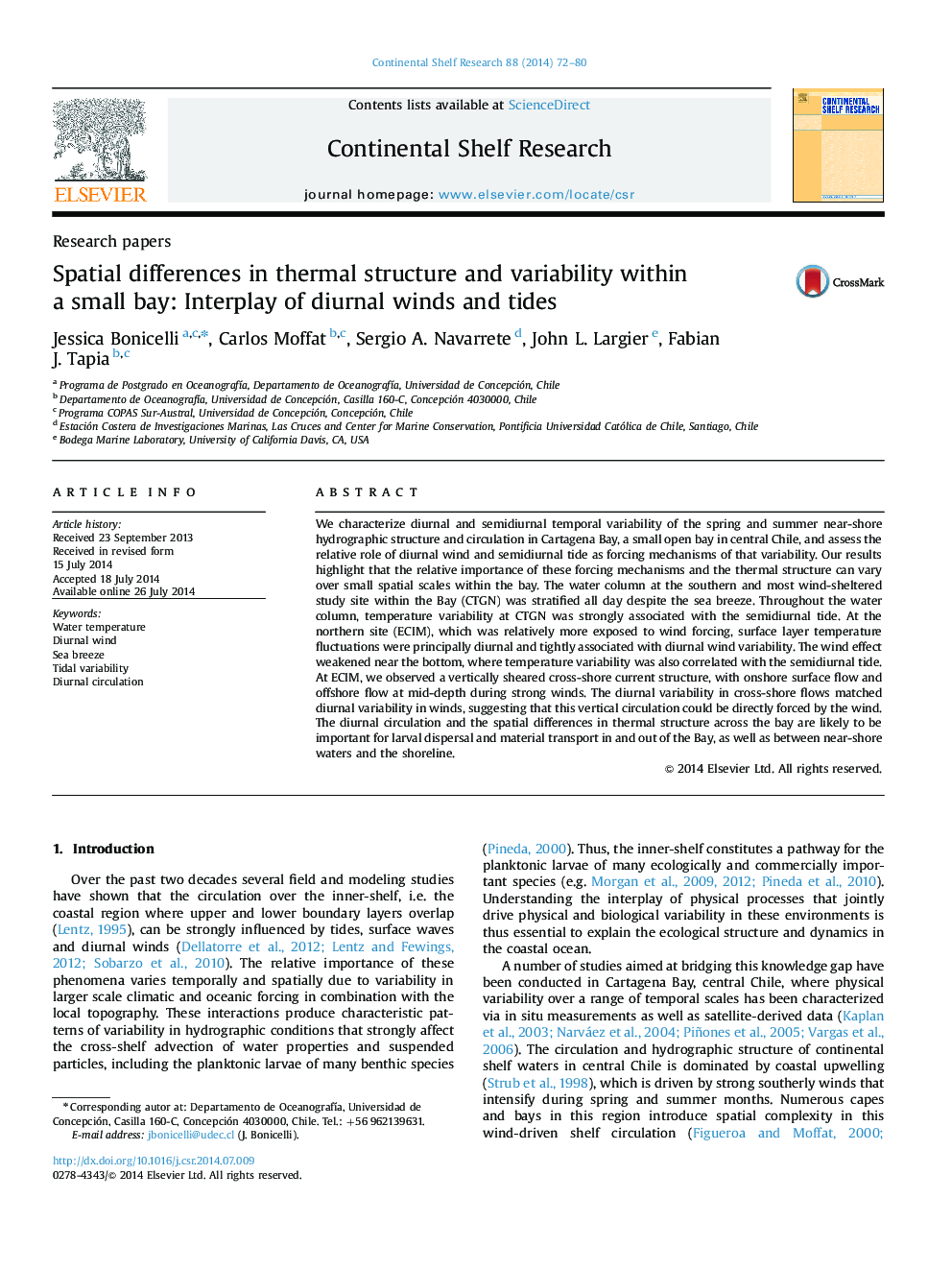| کد مقاله | کد نشریه | سال انتشار | مقاله انگلیسی | نسخه تمام متن |
|---|---|---|---|---|
| 4531882 | 1626124 | 2014 | 9 صفحه PDF | دانلود رایگان |

• High frequency temperature variability differs between opposite ends of the bay.
• Diurnal wind is most influential on temperature variability at ECIM.
• Semidiurnal tide is most influential on temperature variability at CTGN.
• The water column at CTGN is always well stratified despite sea breeze.
• At ECIM there is a 2-layer structure in the diurnal cross-shore current.
We characterize diurnal and semidiurnal temporal variability of the spring and summer near-shore hydrographic structure and circulation in Cartagena Bay, a small open bay in central Chile, and assess the relative role of diurnal wind and semidiurnal tide as forcing mechanisms of that variability. Our results highlight that the relative importance of these forcing mechanisms and the thermal structure can vary over small spatial scales within the bay. The water column at the southern and most wind-sheltered study site within the Bay (CTGN) was stratified all day despite the sea breeze. Throughout the water column, temperature variability at CTGN was strongly associated with the semidiurnal tide. At the northern site (ECIM), which was relatively more exposed to wind forcing, surface layer temperature fluctuations were principally diurnal and tightly associated with diurnal wind variability. The wind effect weakened near the bottom, where temperature variability was also correlated with the semidiurnal tide. At ECIM, we observed a vertically sheared cross-shore current structure, with onshore surface flow and offshore flow at mid-depth during strong winds. The diurnal variability in cross-shore flows matched diurnal variability in winds, suggesting that this vertical circulation could be directly forced by the wind. The diurnal circulation and the spatial differences in thermal structure across the bay are likely to be important for larval dispersal and material transport in and out of the Bay, as well as between near-shore waters and the shoreline.
Journal: Continental Shelf Research - Volume 88, 1 October 2014, Pages 72–80